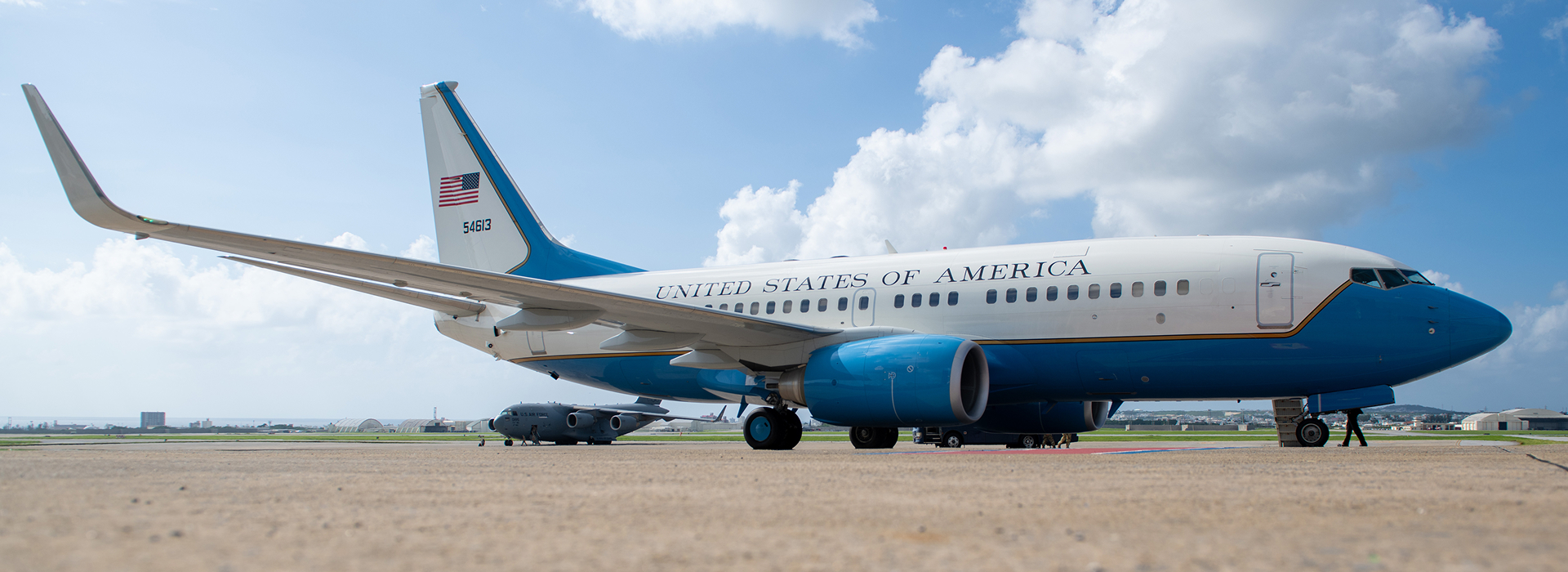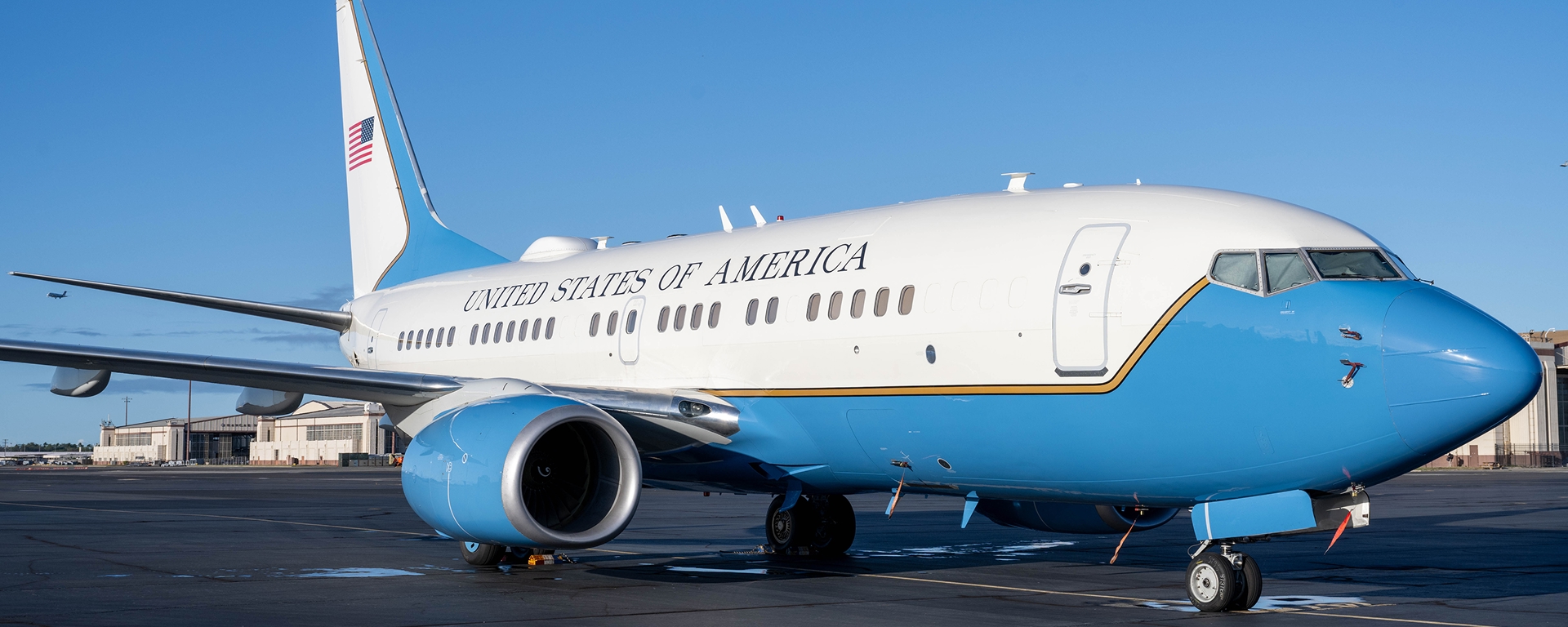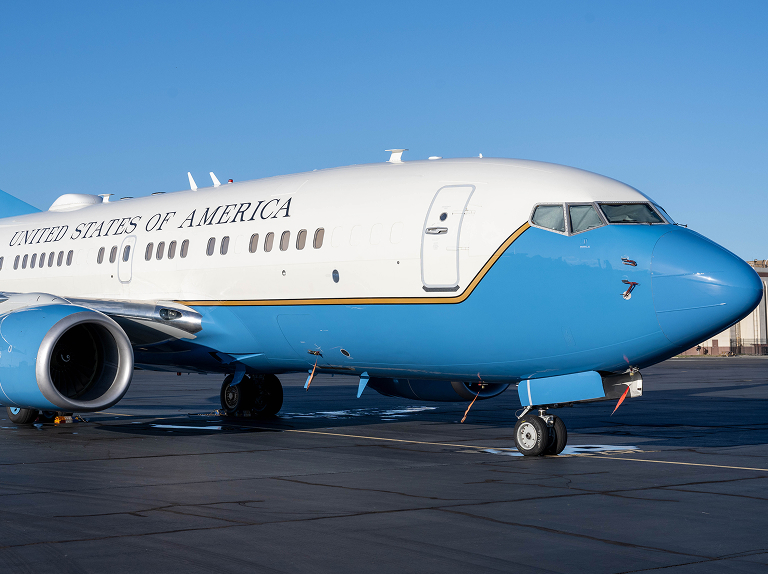The C-40 is a mission-flexible, FAA-certified 737-700 combi optimized to transport passengers and cargo around the globe. Its configurable design supports rapid response and mission-sensitive logistics, offering all-passenger, all-cargo or combi arrangements while minimizing fleet needs and operating cost. Proven in disaster relief and global transport missions, it delivers reliable performance, high availability and low life cycle cost for military and government operators.
Mission-flexible transport, unmatched reliability
Capabilities and Features
Mission Flexibility
One aircraft, multiple mission sets for better utilization and lower cost.
Convertible configurations
Operates as all passenger, all cargo, or combi with flexible cabin layouts to meet troop movement, cargo transport, executive transport and mixed missions.
Combi payload balance
Standard combi configuration supports up to 70 passengers plus 15,000 pounds (6,804 kilograms) of cargo; full cargo capacity is approximately 35,000 pounds (15,876 kilograms) and full passenger capacity is 121.
Performance and Reliability
High-performance, low-cost operations to keep missions ready when and where they are needed.
Proven workhorse
Designed and modified from the 737-700 platform to deliver reliable, familiar performance with commercial sustainment benefits.
Operational availability
Optimized for mission readiness and high mission-capable rates, enabling rapid deployment for humanitarian relief, contingency operations and routine logistics.
Support and Integration
Seamless partnership with other airlift platforms and comprehensive sustainment.
Force multiplier
Works alongside heavy lifters such as the C-17 to provide tailored lift solutions while reducing the need for multiple specialized assets.
Global sustainment footprint and customers
Delivered from Renton, Washington, and modified in San Antonio, the C-40Ai is operated by the U.S. Navy Reserve (14 aircraft in service). The fleet is maintained at five naval air stations: NAS Oceana, Virginia; NAS North Island, California; NAS Jacksonville, Florida; NAS JRB Fort Worth, Texas; and NAS Whidbey Island, Washington.
Mission support services
Established operating bases, training and logistics support keep fleets mission ready for disaster relief, contingency response and routine global transport.

Specifications
| Engines | Advanced-technology CFM56-7 |
|---|---|
| Maximum Gross Weight: Takeoff | 171,000 pounds (77,564 kilograms) |
| Maximum Gross Weight: Zero Fuel | 126,000 pounds (57,153 kilograms) |
| Lower Hold Cargo Volume | 885 cubic feet (25.1 cubic meters) |
| Range | 3,200 nautical miles |
| Altitude Capability | 41,000 feet (1,161 meters) |
| Maximum Sea-Level Static Thrust Performance | 24,000 pounds (10,886 kilograms) |
|---|---|
| Maximum Gross Weight: Landing | 134,000 pounds (60,781 kilograms |
| Fuel Capacity | 6,875 gallons (26,025 liters) |
| Schedule Reliability | 99.58% |
| Cruise Speed | Mach 0.78 to Mach 0.82 |
| Extended Operations (ETOPS) | 180 minutes |


